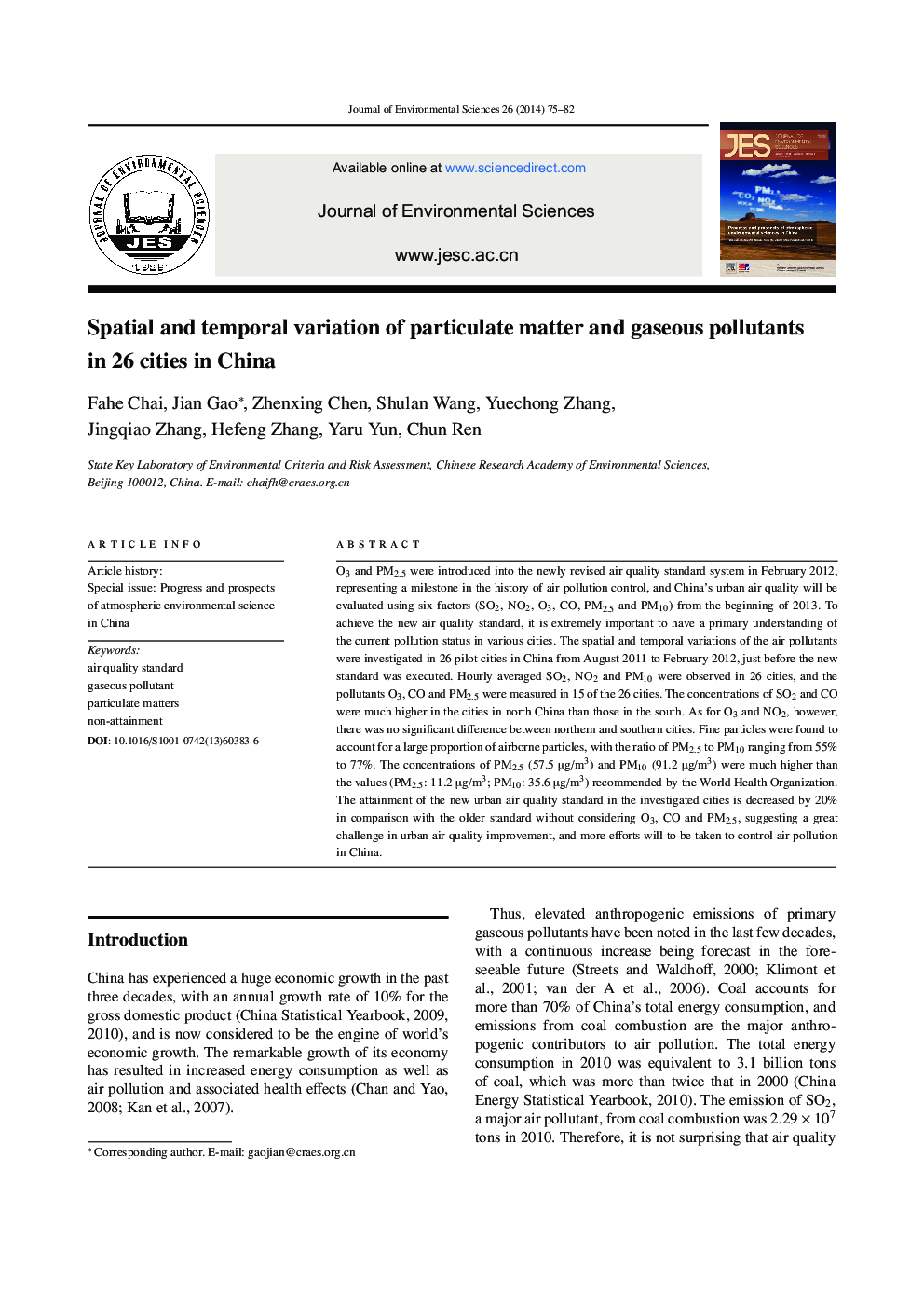| کد مقاله | کد نشریه | سال انتشار | مقاله انگلیسی | نسخه تمام متن |
|---|---|---|---|---|
| 4454790 | 1312494 | 2014 | 8 صفحه PDF | دانلود رایگان |
O3 and PM2.5 were introduced into the newly revised air quality standard system in February 2012, representing a milestone in the history of air pollution control, and China's urban air quality will be evaluated using six factors (SO2, NO2, O3, CO, PM2.5 and PM10) from the beginning of 2013. To achieve the new air quality standard, it is extremely important to have a primary understanding of the current pollution status in various cities. The spatial and temporal variations of the air pollutants were investigated in 26 pilot cities in China from August 2011 to February 2012, just before the new standard was executed. Hourly averaged SO2, NO2 and PM10 were observed in 26 cities, and the pollutants O3, CO and PM2.5 were measured in 15 of the 26 cities. The concentrations of SO2 and CO were much higher in the cities in north China than those in the south. As for O3 and NO2, however, there was no significant difference between northern and southern cities. Fine particles were found to account for a large proportion of airborne particles, with the ratio of PM2.5 to PM10 ranging from 55% to 77%. The concentrations of PM2.5 (57.5 μg/m3) and PM10 (91.2 μg/m3) were much higher than the values (PM2.5: 11.2 μg/m3; PM10: 35.6 μg/m3) recommended by the World Health Organization. The attainment of the new urban air quality standard in the investigated cities is decreased by 20% in comparison with the older standard without considering O3, CO and PM2.5, suggesting a great challenge in urban air quality improvement, and more efforts will to be taken to control air pollution in China.
Journal: Journal of Environmental Sciences - Volume 26, Issue 1, 1 January 2014, Pages 75-82
